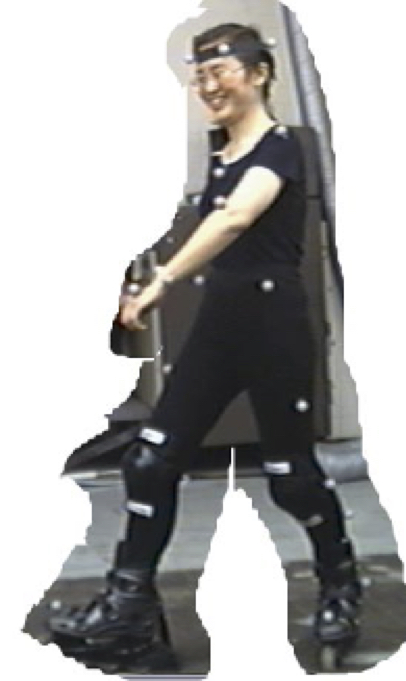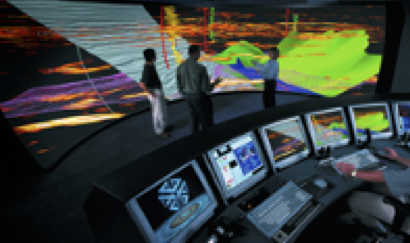The Vision Graphics and Visualisation Group (VGVG)
The VGV group officially started around 2004, but interests in vision and graphics go back to the early days of the department. Brian Rudling (a founder member of the department) had an interest in computer graphics right from the start. He introduced a course on computer graphics. The hardware was quite primitive by today’s standards – a tektronix storage tube, and a flatbed plotter – but it allowed early research and teaching of graphics topics.
It also helped to inspire Jan Pinkava, who later went on to win an Oscar for his animated short film Geri’s Game, to submit a final year project involving a morphing animation.
Graphics was pursued by Patrick Olivier, and by Horst Holstein. Horst acquired the first Vicon motion capture system around 2000 and his work with his research student Baihua Li are still getting quite a few hits. Motion capture was valuable for collaboration and was used by Broadsword Interactive in the development of their product "Dance UK". The Vicon system also proved useful in projects involving local sports scientists and the Oxford Orthopaedic Engineering Centre.

Dave Barnes also had interests overlapping with the group, including simulating lighting and shadows on Mars, as well as an interest in image-based work, such as detection and analysis of Martian rocks from images. The Vicon system was used extensively for testing the arm of the Beagle 2 Mars lander, and later played a significant role in the Mars Terrain Simulator project, preparing for the ExoMars 2020 mission.
Fred Labrosse joined the department in 2000, with an interest in vision for robot navigation. He was quickly followed by Yonghuai Liu in 2001, with his interest in laser scanning and image registration. Reyer Zwiggelaar joined the department in 2004, bringing his interest in medical image analysis. With a critical mass of staff interested in VGV topics, Chris Price encouraged the creation of the VGV group in 2004. The group’s interests continued to be influenced by robotics, medical image analysis and registration problems. On the teaching side, the formation of the group influenced the decision to start degrees related to the group’s interests. This led to the degrees in Computer Graphics, Vision and Games, one of the departments most popular degree schemes.
The group, including Mark Lee and Neville Greaves (Physics), played a role in the creation of the Visualisation Centre, a £10.4 million, 3500 square-metre facility for innovation and technology transfer. The Centre was purpose designed solely for visualisation technology work and contained high performance computers, 3D theatres, including a full-immersion hemispherium, and offices for software and hardware engineers. The project started in 2006, intended to host business and research facilities relating to vision, graphics and visualisation. A company was established, SEE3D, but the building is now home to the Vice-Chancellor and senior management team. The new centre helped to attract the Medical Image Understanding and Analysis (MIUA) conference to Aberystwyth in 2007.

In 2008 the group received a major boost with funding to form the Welsh Research Institute in Visual Computing (RIVIC), a collaboration between Welsh Universities. This paid for a number of Postdoctoral Researchers and a new member of academic staff, with Bernie Tiddeman joining the department in 2010, bringing his interest in facial image analysis to the group. The formation of RIVIC also played a part in the group attracting the British Machine Vision Conference (BMVC) to Aberystwyth in 2010. Hannah Dee also joined the group later in 2010, coming from a background in video analysis for security applications, but moving into new areas related to image analysis for biology research.
The group has continued to grow in recent years. Helen Miles joined in 2014 as a postdoc working for Bernie, but moved into a lecturer role in 2016, with an interest in Virtual Reality and visualisations for Mars exploration and planning. Antonio Anjos joined the group in 2016, with an interest in medical image analysis and deep learning. David Hunter (a former PhD student of Bernie’s) joined the group in 2017, bringing an interest in psychology and visual perception. But we have also lost members, with Horst retiring and Yonghuai moving to Edge Hill University to take up a chair.
Recent grants and successes for the group include continuing funding for medical image analysis (ISG/BRU, Reyer), robot navigation (Fred), Mars mission support (Fred, Helen), digital heritage (Bernie, Helen), video analysis for plant and marine biology research, (Bernie, Hannah). PhD research funding has received a significant boost recently by being part of the Centre for Doctoral Training in Artificial Intelligence, Machine Learning and Advanced Computing (AIMLAC), along with Bangor, Bristol, Cardiff, Swansea and Super Computing Wales (SCW). Teaching of VGV topics at masters degree level has been given a boost with the £2.5 million Advanced Media Production grant, a collaboration with the departments of History, Welsh History and Theatre, Film & Television Studies. The project is led by Helen with support from Bernie and David Hunter, and aims to improve the skills and employability of people working in the creative industries in Wales.